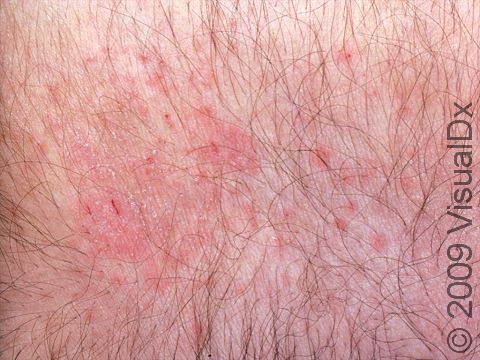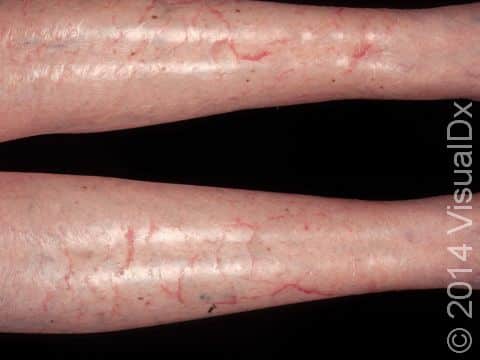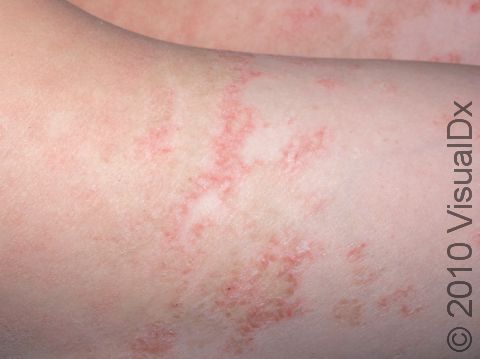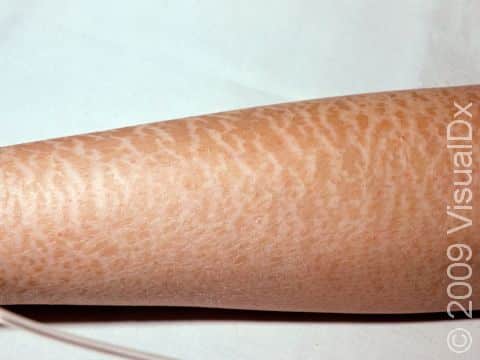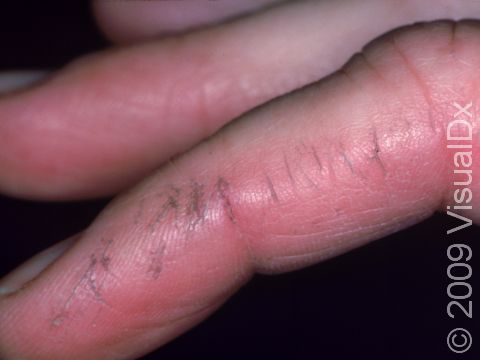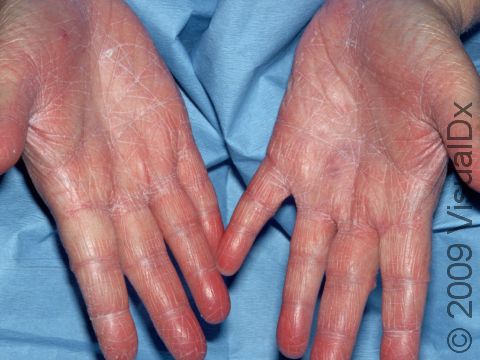
Dry Skin (Xerosis)
Xerosis, commonly known as dry skin, is a condition of rough, scaling, and sometimes cracking skin.
Dry skin is caused by environmental factors, such as cold weather and frequent bathing, as well as by medical conditions such as atopic dermatitis (eczema), hypothyroidism, and malnutrition. Dry skin develops due to a decrease in the natural oils in the outer layer of skin, which makes the skin lose water.
Who's At Risk?
Dry skin can be seen in people of any age, race / ethnicity, and sex. However, the incidence of dry skin increases with age, and nearly all people older than 60 years have some degree of dry skin.
Dry skin is caused by environmental factors, including:
- Low humidity.
- Frequent bathing.
- Harsh soaps.
Dry skin is caused by medical conditions such as:
- Ichthyosis
- Atopic dermatitis (eczema)
- Diabetes
- Hypothyroidism
- Down syndrome
- Liver or kidney disease
- Malnutrition
- HIV / AIDS
- Lymphoma
Signs & Symptoms
The most common locations for dry skin are the:
- Legs, especially the shins.
- Arms.
- Trunk.
- Backs of the hands.
Dry skin appears as dull, rough skin with fine scales that flake off easily. In more advanced stages of dry skin, the skin may have cracks that resemble a dry lakebed. The skin flakes may be white or gray. Inflammation of the areas may lead to pink or red patches.
Dry, inflamed skin tends to be mildly to severely itchy.
Self-Care Guidelines
Healthy bathing habits can improve dry skin, including:
- Taking a bath or shower only once daily. More frequent bathing can make the skin lose moisture.
- Using lukewarm (not hot) water.
- Limiting bathing to no more than 10 minutes.
- Avoiding harsh deodorant soaps (or limit their use to armpits, groin, and feet).
- Using nonsoap cleansers (eg, Dove Sensitive Skin Beauty Bar, Vanicream bar soap, and Nature by Canus).
- Patting (not rubbing) the skin dry after bathing.
- Applying moisturizer immediately after bathing, while the skin is still moist.
- Choosing a moisturizer that is an oil-based cream or ointment (eg, CeraVe Moisturizing Cream, CeraVe Healing Ointment), as these work better than water-based lotions.
The following over-the-counter products may be helpful:
- Petrolatum or petroleum jelly (eg, Vaseline)
- Fragrance-free creams or ointments (eg, Cetaphil Moisturizing Cream)
- Preparations containing alpha-hydroxy acids such as glycolic acid or lactic acid (eg, AmLactin Daily Moisturizing Lotion)
- Creams containing urea (eg, Pedinol Ureacin-20 Moisturizing Cream)
- Over-the-counter cortisone cream (eg, Cortisone-10) if the areas are itchy
Use a humidifier in the bedroom during the cold, dry seasons to help prevent dry skin.
Treatments
The medical professional may prescribe a topical steroid ointment if the skin is inflamed or very itchy.
If the medical professional suspects that a medical condition is causing your dry skin, they may do blood tests or other diagnostic procedures. The best treatment for dry skin caused by a medical problem is to treat the underlying medical problem.
Visit Urgency
See your medical professional for an evaluation if the above self-care measures do not cure your dry skin.
Trusted Links
References
Bolognia J, Schaffer JV, Cerroni L. Dermatology. 4th ed. Philadelphia, PA: Elsevier; 2018.
James WD, Elston D, Treat JR, Rosenbach MA. Andrew’s Diseases of the Skin. 13th ed. Philadelphia, PA: Elsevier; 2019.
Kang S, Amagai M, Bruckner AL, et al. Fitzpatrick’s Dermatology. 9th ed. New York, NY: McGraw-Hill Education; 2019.
Last modified on April 7th, 2025 at 11:30 am

Not sure what to look for?
Try our new Rash and Skin Condition Finder
